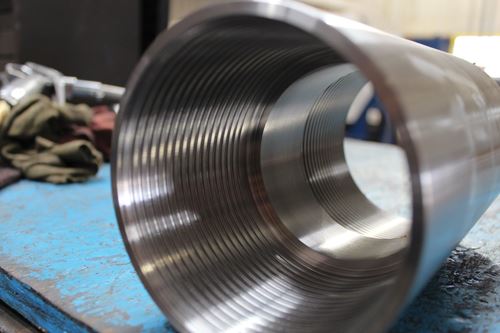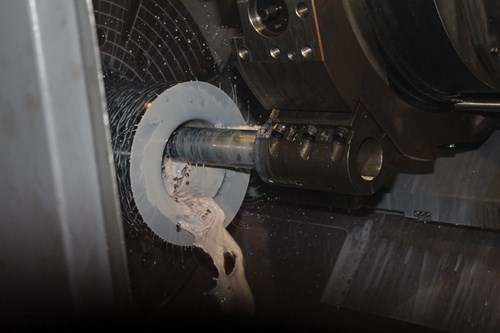It’s been said that life is all about connections. That’s certainly true for Superior Threaded Products (STP), but in this case, it’s not an abstract concept. The Houston, Texas-based manufacturer specializes in machining the threads that connect components for the oil and gas industry. Staying competitive requires continually striving to do so better, faster and cheaper.
One tool the company relies on to streamline threading processes is Esprit CAM software from DP Technology (Camarillo, California). The ability to develop customized software add-ins has enabled the company to automate repetitive, time-consuming tasks, says Victor Davila, manufacturing engineer at STP. As a result, programs that once took hours now take only minutes. “With Esprit, I can write a program literally as fast as I can type,” he says.
Mr. Davila says he has been using Esprit for about 10 of his total 18 years in manufacturing. In fact, his experience with the software was instrumental in STP’s decision replace its previous CAM system with Esprit in 2008. Since then, the system has been used to program a variety of oil and gas industry parts, including hangers, pup joints, seals and more in materials ranging from 4140 carbon steel and chrome to stainless steel and Inconel. For most of these parts, the company’s 50-plus employees rely on 10 two-axis lathes, one bar mill, one VMC and one VTL.
Although threading is a particular specialty of the shop, manually programming threading operations can quickly become complicated and time consuming, Mr. Davila says. As an example, he cites one of the most complex threads machined at STP, a SLIJ2 VAM premium thread used as an oil rig connection. This tapered thread is multi-layered and includes complex geometry, detail and seals. “Drawing it out, a lot of dimensions are called out of other dimensions called out of other dimensions,” he explains. “You can get lost when you’re programming. It can take hours.”
To simplify programming, Mr. Davila designs custom add-ins for Esprit using the software’s application programming interface (API) and Microsoft Visual Basic. This enables him to customize machining by automating the programming of part families and other routine functions like roughing and threading cycles. Without such automation, he would have to manually draw lines, trim, choose tools and operations, and so on. “I have used Esprit in ways I hadn’t imagined by using Visual Basic 6 and automating the programming process,” he says, adding that a local reseller guided him through the process. “A program that would usually take me two to five hours now takes as little as five minutes.”
In fact, this capability has streamlined programming to the point that Mr. Davila often uses Microsoft Excel spreadsheets to input geometry into the CAM system. “I can enter the numbers, track what I’ve done and change variables,” he says. “It provides more control.”
This capability is especially useful for jobs that involve many dimensions, such as the SLIJ2 thread. Adding to the complexity of this thread is the fact that it is often specified in different lengths and weights. As the pipe wall thickness changes, the dimensions change as well, Mr. Davila says. As a result, there are roughly 20 different thread types under the category of “5-inch SLIJ2 thread” alone. “One day, I had four of these programs to write,” he says. “If I’d had to write all four without my macro, it would have taken me two hours each. Because I was able to just enter all of my variables, it took me 20 minutes.”
Now, Mr. Davila and other personnel are free to focus on more value-added activities, as opposed to repetitive programming tasks. Ultimately, that could prove just as beneficial to the overall operation as the quantifiable advantages of reduced programming time. “I’ve saved thousands of dollars in programming time,” he says.




























